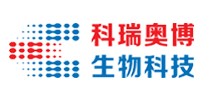产品中心
当前位置:首页>产品中心Anti-TANK/PE-Cy7
货号: bs-1355R-PE-Cy7 基本售价: 2980.0 元 规格: 100ul
产品信息
- 产品编号
- bs-1355R-PE-Cy7
- 英文名称
- Anti-TANK/PE-Cy7
- 中文名称
- PE-Cy7标记的TANK抗体
- 别 名
- I TRAF; ITRAF; TRAF family member associated NF KAPPA B activator; TRAF family member associated NFKB activator; TRAF interacting protein; TRAF interacting protein TANK isoform a; I-TRAF; Tank; TANK_HUMAN; TRAF family member-associated NF-kappa-B activator; TRAF-interacting protein; TRAF interacting protein TANK isoform b; TRAF2.
- 规格价格
- 100ul/2980元购买 大包装/询价
- 说 明 书
- 100ul
- 研究领域
- 细胞生物 免疫学 信号转导 生长因子和激素
- 抗体来源
- Rabbit
- 克隆类型
- Polyclonal
- 交叉反应
- Human, Mouse, Rat,
- 产品应用
- IF=1:50-200
not yet tested in other applications.
optimal dilutions/concentrations should be determined by the end user.
- 分 子 量
- 48kDa
- 性 状
- Lyophilized or Liquid
- 浓 度
- 1mg/ml
- 免 疫 原
- KLH conjugated synthetic peptide derived from human TANK
- 亚 型
- IgG
- 纯化方法
- affinity purified by Protein A
- 储 存 液
- 0.01M TBS(pH7.4) with 1% BSA, 0.03% Proclin300 and 50% Glycerol.
- 保存条件
- Store at -20 °C for one year. Avoid repeated freeze/thaw cycles. The lyophilized antibody is stable at room temperature for at least one month and for greater than a year when kept at -20°C. When reconstituted in sterile pH 7.4 0.01M PBS or diluent of antibody the antibody is stable for at least two weeks at 2-4 °C.
- 产品介绍
- background:
TANK was initially identified as a novel TRAF-interacting protein that regulated TRAF-mediated signal transduction. Specifically, ligand binding by surface receptors in the tumor necrosis factor (TNF) receptor and Toll/interleukin-1 (IL-1) receptor families lead to the formation of a TRAF/TANK complex that mediates the activation of the transcription factor NF-kappaB. TANK is found in the cytoplasm and can bind to TRAF1, TRAF2, or TRAF3, thereby inhibiting TRAF function by sequestering the TRAFs in a latent state in the cytoplasm. For example, this protein can block TRAF2 binding to LMP1, the Epstein Barr virus transforming protein, and inhibit LMP1-mediated NF kappa B activation.
Function:
Acts as a regulator of TRAF function by maintaining them in a latent state. Overexpression inhibits TRAF2-mediated NF-kappa-B activation signaled by CD40, TNFR1 and TNFR2. Blocks TRAF2 binding to LMP1 and inhibits LMP1-mediated NF-kappa-B activation. May be involved in I-kappa-B-kinase (IKK) regulation; may function as an adapter for kinases such as TBK1 or IKBKE that can modulate IKK activity.
Subunit:
Interacts with TBK1 (via TRAF-C domain). Interacts with TRAF1 (via TRAF-C domain). Interacts with TRAF2 (via TRAF-C domain); the interaction is disrupted by the phosphorylation of TANK by IKBKE. Interacts with TRAF3 (via TRAF-C domain); the interaction with TRAF3 is weaker than the interactions with TRAF1 and TRAF3. Interacts with IKBKG; the interaction is enhanced by IKBKE and TBK1. Part of a ternary complex consisting of TANK, IKBKB and IKBKG.
Subcellular Location:
Cytoplasm.
Tissue Specificity:
Ubiquitous.
Post-translational modifications:
Phosphorylated by IKBKE.
Similarity:
Contains 1 C2H2-type zinc finger.
Database links:Entrez Gene: 8658 Human
Entrez Gene: 21951 Mouse
Entrez Gene: 290794 Rat
Omim: 603303 Human
SwissProt: O95271 Human
SwissProt: Q6PFX9 Mouse
SwissProt: Q8BND2 Mouse
Unigene: 370267 Human
Unigene: 88364 Mouse
Important Note:
This product as supplied is intended for research use only, not for use in human, therapeutic or diagnostic applications.

